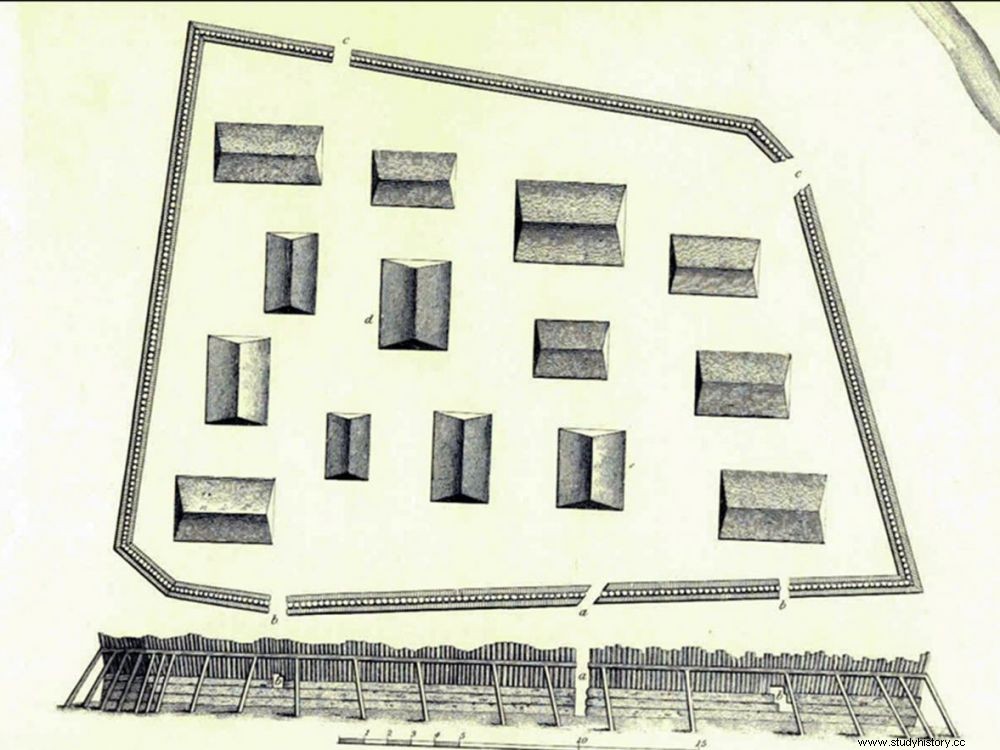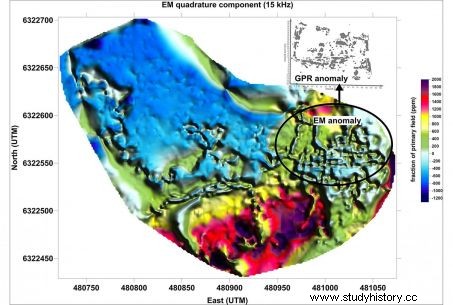Thanks to advanced technologies, two American researchers have managed to find traces in Alaska of a fort destroyed by Russian settlers in the early 19th century.

A map of the fort drawn by the Russians in the 19th century.
Two American researchers have found traces of a wooden fort that once stood in Alaska (USA). The results of their work were published on January 25, 2021 in the journal Antiquity .
A major battle for the colonization of Alaska
Back in 1799:Russia sends a small army to take control of Alaska to develop the fur trade there. The Tlingit, the indigenous people of the region, succeeded in evicting them in 1802. "Expecting the return of the Russians, the Tlingit built a wooden fort over two years - the trapezoidal-shaped Shiskinoow, explain the researchers in their study. They armed him with rifles, cannons and gunpowder obtained from British and American traders ".
Two American researchers have found traces of a wooden fort that once stood in Alaska (USA). The results of their work were published on January 25, 2021 in the journal Antiquity .
A major battle for the colonization of Alaska
Back in 1799:Russia sends a small army to take control of Alaska to develop the fur trade there. The Tlingit, the indigenous people of the region, succeeded in evicting them in 1802. "Expecting the return of the Russians, the Tlingit built a wooden fort over two years - the trapezoidal-shaped Shiskinoow, explain the researchers in their study. They armed him with rifles, cannons and gunpowder obtained from British and American traders ".
Two years later, the Russian settlers returned and, aided by Aleuts, they began a major battle against the Tlingits in the area now known as the town of Sitka. They miss their ground assault and decide to retreat under cover of naval fire. "The Tlingit victory was short-lived, emphasizes the study. With gunpowder supplies running low, the ancient Tlingits decided to abandon the fort in a nighttime tactical withdrawal. Russian and Aleutian forces razed the abandoned structure, but not before recording a detailed map ". This did not prevent the exact location of the fort from having eluded researchers for a century.
Traces that correspond to the historical descriptions of the fort
To find the contours of Shiskinoow, the two researchers combined two methods of non-invasive geophysical prospecting:electromagnetic induction and ground-penetrating radar (also called ground penetrating radar). The latter makes it possible to observe anomalies in the ground at different depths. "It's the same principle as a radar, explains to Sciences et Avenir Yan Axel Gomez Coutouly, CNRS researcher and head of the French archaeological mission in Alaska, who did not participate in this study. The device sends electrical signals into the ground at different depths (50cm, 100cm, 150cm, etc.) and calculates the time it takes for the signal to return. If in the ground there are anomalies (a wall, a change of sediment, ice, etc.), the signal will not return at the same speed and will therefore detect what we will call an anomaly ". Electromagnetic induction will only reveal magnetic anomalies. For example, "burnt structures such as hearths, metallic objects... ", continues the researcher. And to add:"Unlike ground penetrating radar, the magnetic method does not indicate the depth of the anomaly ".
These two instruments revealed "a pattern that matches historical descriptions of the fort, in terms of shape and scale ", emphasizes the study. Ground-penetrating radar helped to reveal the overall structure of the structure.

Both methods reveal a similar anomalous pattern in the same location, which bears a striking resemblance to the historical drawing of the fort. Credit:Antiquity / T. Urban
The researchers were also able to note on the site, thanks to the magnetic method, the presence of "metallic anomalies ", some of which may be battle-related such as ammunition and more specifically cannonballs. This fort was the last physical barrier to fall before the occupation of Alaska by Russia. Eventually, the United States would purchase this area in 1867 for seven million dollars.
